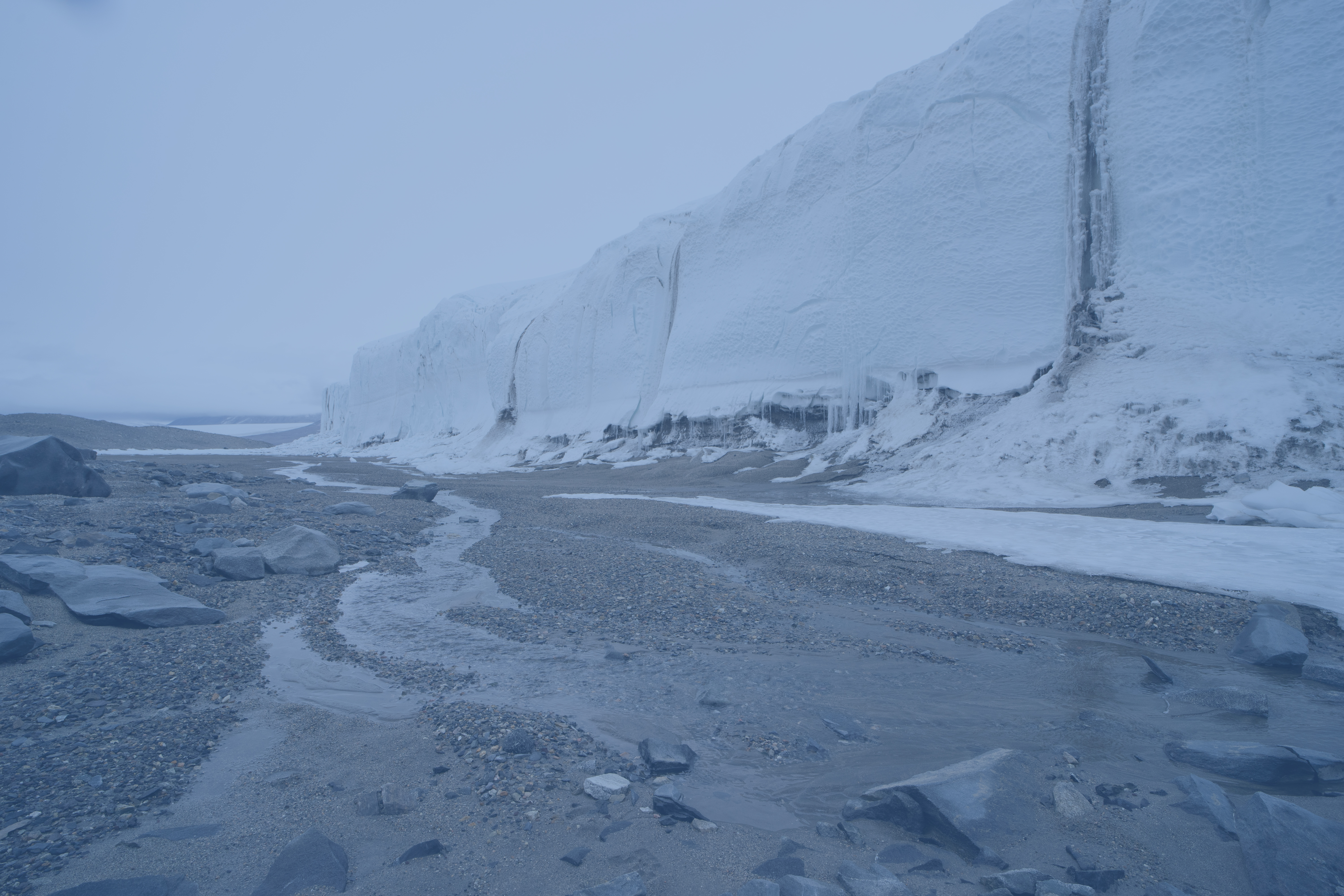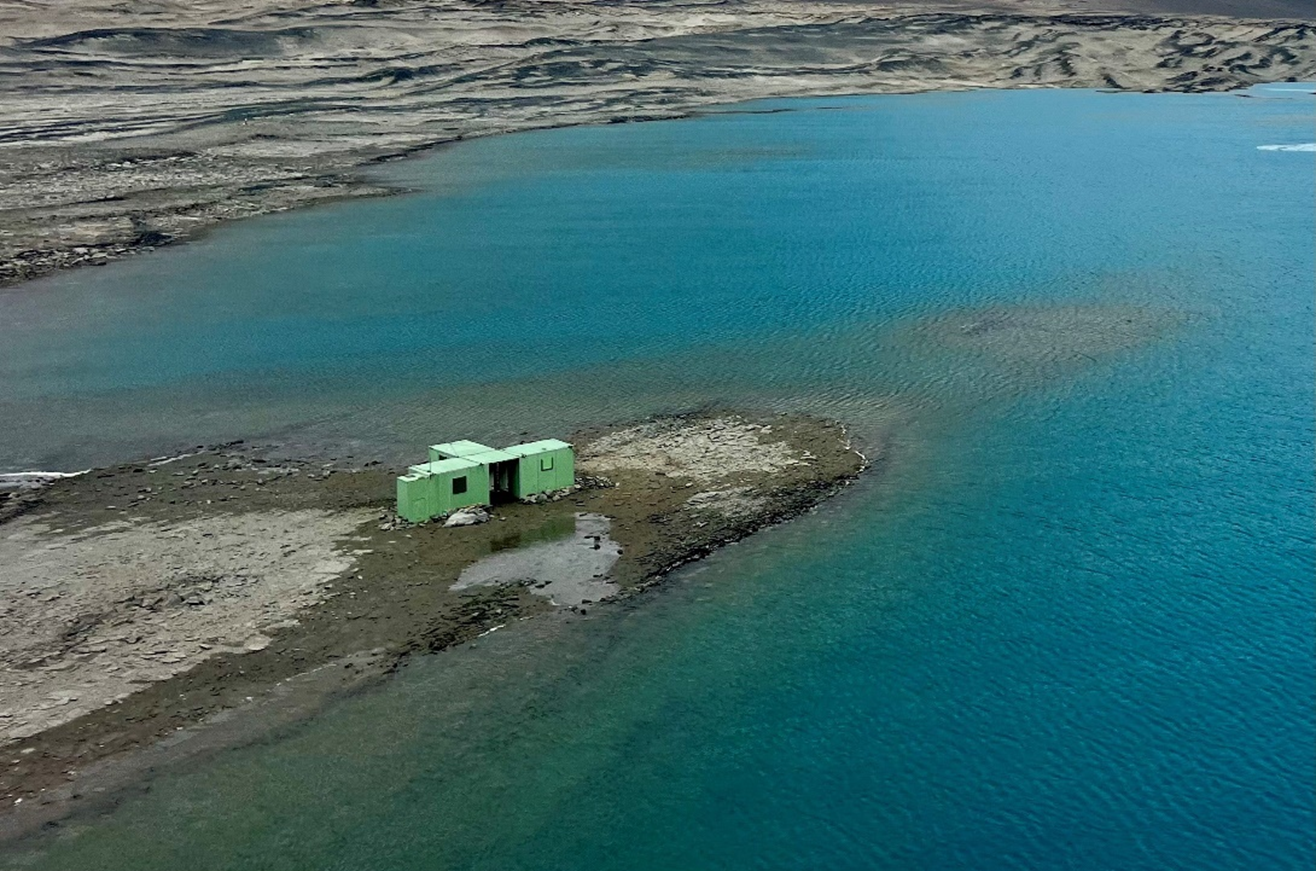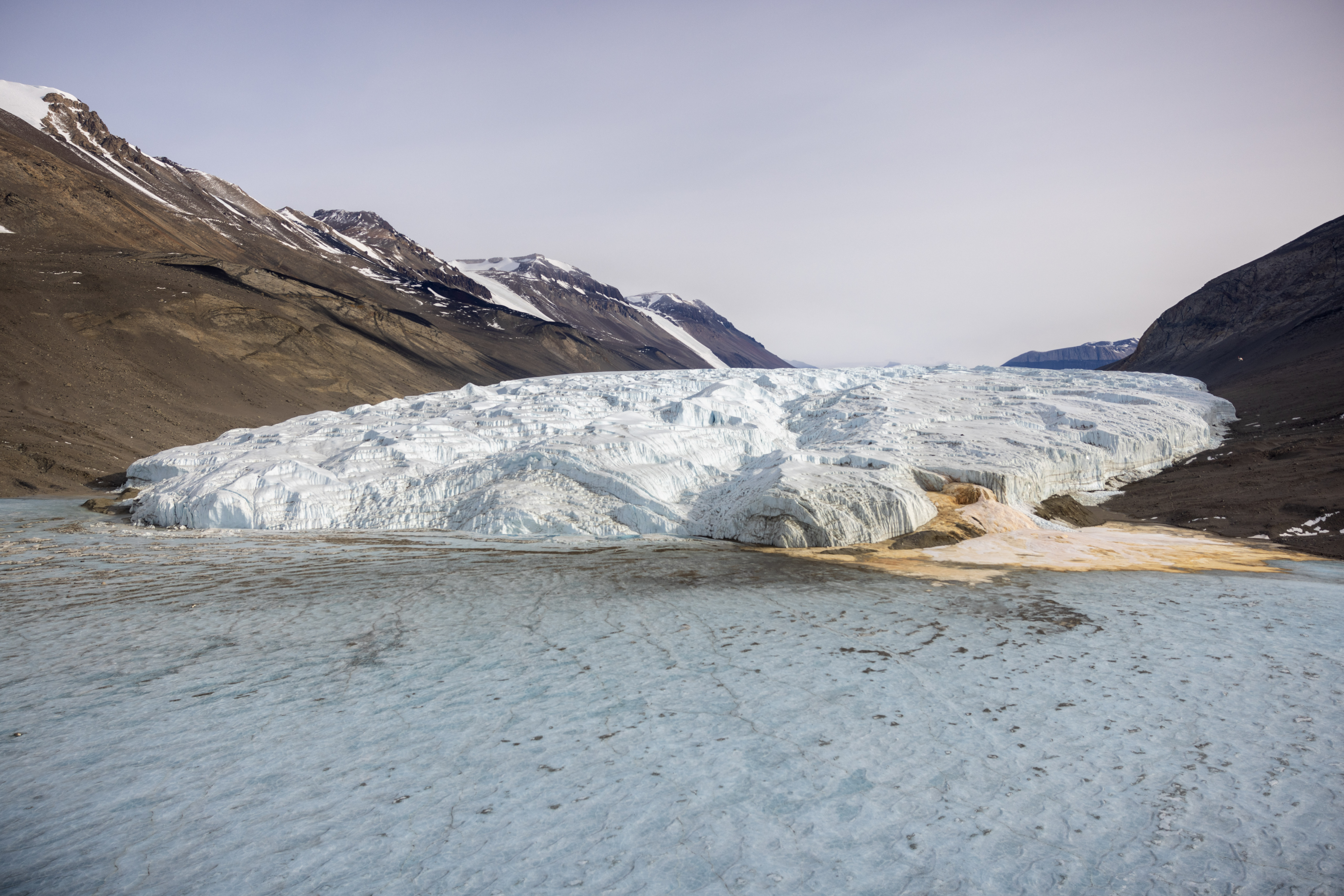
Antarctica's terrestrial ecology in a changing climate
Antarctica’s Ross Sea region has a range of terrestrial environments, including ice-covered lakes, isolated mountain ridges, and ancient soils. A changing climate may fundamentally impact the region’s unique ecosystems in ways that can affect species distribution, abundance, and productivity.
This summary
This summary aims to inform policy makers and scientific peers about terrestrial ecosystem research conducted in the Ross Sea region by New Zealand’s Antarctic Science Platform (ASP).
This research synthesis:
- shares fundamental information about terrestrial ecosystems in Antarctica
- highlights climate-related risks to terrestrial ecology in the Ross Sea region
- provides critical baselines and new insights to understand how terrestrial ecosystems have developed over time and are likely to change in a warming world
- provides examples of how the research can be applied by domestic and international collaborators to advance science, environmental management, and ecosystem resilience.
Key points
- Our research demonstrates that ecosystem structure and function result from highly complex interactions of physical and biological processes that operate over different time frames. This interaction means a holistic approach is needed to identify critical vulnerabilities and support effective management.
- Our emerging network of weather monitoring stations at sensitive sites has identified recent climatic extremes in the terrestrial Ross Sea region. These extremes are caused by atmospheric rivers flowing to Antarctica from the north.
- Research demonstrates that the availability and distribution of meltwater is a critical driver of how the Ross Sea region’s terrestrial ecosystems will respond to a warming world.
- Biogeographic patterns provide critical insights into the connectivity with and within Antarctica. New data will help to validate and improve modelling of the drivers that change biogeographic patterns.
- A new biogeography register represents the first meta-analysis of findings from over 50 years of biology research in the Ross Sea region, across multiple National Antarctic Programmes. This register can help environmental managers include biogeographic patterns in their decision-making.
- Lakes, ponds, and streams are particularly challenged by changing volumes of meltwater production. Many inland lake levels are rising due to increasing discharge in tributary streams, forcing National Antarctic Programmes to remove lake shore infrastructure to avoid flooding.
- A biogeography-driven and climate-responsive framework to assess the environment will support national and international policy makers, including the Antarctic Treaty System. This framework will help people make informed decisions around environmental management in a changing world.
Terrestrial ecology research
Antarctic lakes are being impacted by excess meltwater
Antarctic desert lakes can help show the:
- effects of increased meltwater on terrestrial ecology
- need for evidence-based intervention.
Changing lake area requires research infrastructure to move
Most of these freshwater lakes have closed basins, with an inflow but no outflow, fed by melting glaciers. When inflow exceeds water loss through evaporation and ablation, lake levels rise. In recent decades, the discharge of water into Lake Vanda has increased and the level of the lake has risen. This rise has led to the removal of lakeside facilities and the introduction of careful remediation to mitigate flood impacts. The ASP has helped develop strategies to minimise legacy effects during the infrastructure removal and decontamination of such sites.
Higher lake levels reduce available light for aquatic moss
To date, the biodiversity of dominant microbial communities in Lake Vanda has kept pace with rising lake levels, and no evidence yet exists of species turnover. However, this lake is the only known location in the McMurdo Dry Valleys of a particular aquatic moss. This moss is threatened as an increasing lake level reduces the amount of light available to the moss.
Heat and water level changes harm microbial biomass on the lake floor
Other effects are not so obvious. In a shallower lake, Lake Fryxell, changes in heat and water influx are warming the water and thinning the ice cover. The ecological response has been a dramatic loss of microbial biomass from the lake. More light through thinning ice increases the rate of photosynthesis, and promotes oxygen supersaturation and bubbles in the microbial, mat-forming plants that cover the lake floor. These bubbles cause the mats to float up under the ice, freeze during winter, and be lost from the lake.

Research offers opportunities to connect, collaborate, and deepen understanding
The ASP investment creates opportunities for new collaborative research in Antarctica and beyond. The programme facilitated the unprecedented collection of biogeographical records across Antarctica. Most immediately, terrestrial ecology research feeds into the McMurdo Dry Valleys Antarctic Specially Managed Area (or ASMA) Management Plan evolution and the work of the Environmental Management team at Antarctica New Zealand.
This research also helped:
- contribute to submissions to the Committee of Environmental Protection (CEP)
- the initiation of an New Zealand Antarctic Environmental Assessment (NZAEA)
- advise the New Zealand delegation to the CEP.
We’re also supporting the CEP’s Climate Change Response Work Program, with a particular focus on developing ways to protect the Ross Sea region’s unique terrestrial biodiversity.

Contact information
Charles Lee
Associate Professor, University of Waikato
charles.lee@waikato.ac.nz
Ian Hawes
Professor, University of Waikato
ian.hawes@waikato.ac.nz
Definitions
Biodiversity: the variety of plant and animal life in a particular habitat.
Biogeography: the geographic distribution of organisms over space and time.
Dry valleys: largely snow-free valleys with low humidity and a lack of ice cover.
Terrestrial ecology: the relationships between land-based organisms and their physical environment.
References
Colesie C, Pan Y, Cary S C, Gemal E, Brabyn L, Kim J-H, Allan Green TG, Lee CK (2022). The longest baseline record of vegetation dynamics in Antarctica reveals acute sensitivity to water availability. Earth’s Future 10. doi:10.1029/2022EF002823
Datta R, Katurji M, Nielsen E, Meyer H, Zawar-Reza P, Valdes ML (2024). The winter Foehn footprint across McMurdo Dry Valleys of Antarctica using a satellite-derived data set-AntAir v1.0. Journal of Geophysical Research: Atmospheres 129. doi:10.1029/2023JD039300
Hawes I, Howard-Williams C, Gilbert N, Hughes KA, Convey P, Quesada A (2023). The need for increased protection of Antarctica’s inland waters. Antarctic Science 35(2):64-88. doi:10.1017/S0954102022000463
Hawes I, Howard-Williams C, Webster-Brown J, Poirot C (2025). Restoration of legacy contaminated sites in Antarctica: Lessons from Vanda Station, McMurdo Dry Valleys. Polar Record 61. doi:10.1017/S0032247424000354
Hofsteenge MG, Cullen NJ, Reijmer CH, van den Broeke M, Katurji M, Orwin JF (2022). The surface energy balance during foehn events at Joyce Glacier, McMurdo Dry Valleys, Antarctica. The Cryosphere 16. doi:10.5194/tc-16-5041-2022
Hofsteenge MG, Cullen NJ, Conway JP, Reijmer CH, van den Broeke MR, Katurji M (2024). Meteorological drivers of melt at two nearby glaciers in the McMurdo Dry Valleys of Antarctica. Journal of Glaciology 70. doi:10.1017/jog.2023.98
Koerich G, Fraser CI, Lee CK, Morgan FJ, Tonkin JD (2023). Forecasting the future of life in Antarctica. Trends in ecology and evolution 38(1). doi:10.1016/j.tree.2022.07.009
Nielsen EB, Katurji M, Zawar-Reza P, Meya H (2023). Antarctic daily mesoscale air temperature dataset derived from MODIS land and ice surface temperature. Scientific Data 10(833). doi:10.1038/s41597-023-02720-z
Pletzer T, Conway JP, Cullen NJ, Eidhammer T, Katurji M (2024). The application and modification of WRF-Hydro/Glacier to a cold-based Antarctic glacier. Hydrology and Earth System Sciences 28(3). doi:10.5194/hess-28-459-2024
Stone MS, Devlin SP, Hawes I, Welch KA, Gooseff MN, Takacs-Vesbach C, Morgan-Kiss R, Adams BJ, Barrett JE, Priscu JC, Doran Pt (2024). McMurdo Dry Valley lake edge ‘moats’: the ecological intersection between terrestrial and aquatic polar desert habitats. Antarctic Science 36(4). doi:10.1017/S0954102024000087